The best new free VST/AU plugin effects to download in 2017
Refresh your rack with these first-rate, no-cost processors
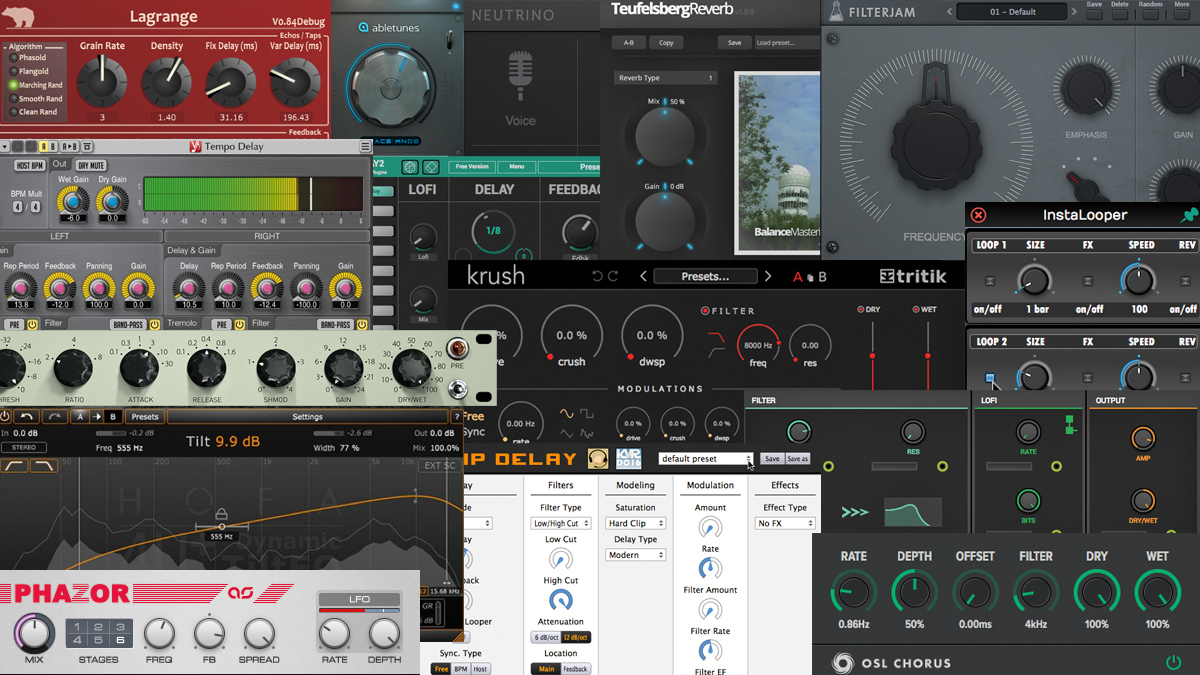
Free FX
We’ve already told you about some of the best free plugin synths of the past 12 months, and now our look back at the year in freeware moves on to effects.
Whether you’re looking for mixing, creative or guitar processors, there’s something for you on our menu, so click through the slides and get ready to trigger that itchy download finger.
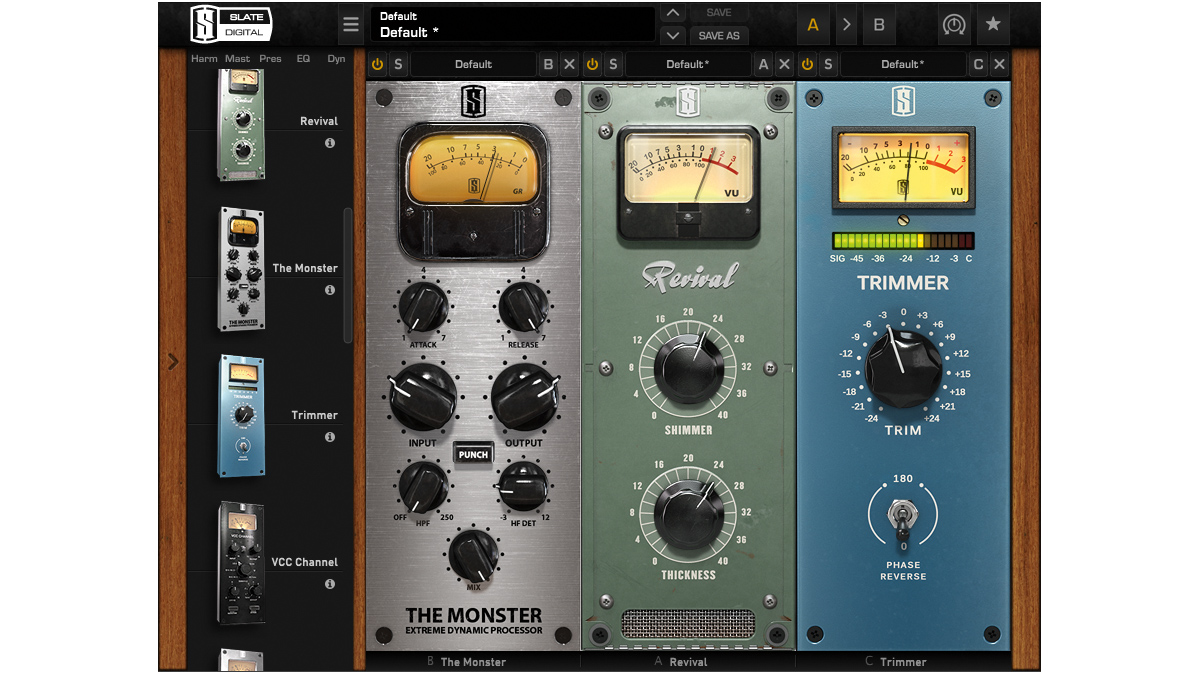
Slate Digital freebies
Slate Digital’s The Monster is only the latest of the developer’s free offerings, though we have to say it’s one of the best.
Slate offers three free mixing tools in total, with the other two being Revival and Trimmer. All the freebies must be loaded into the free Virtual Mix Rack, and you’ll need an iLok to use them. Some might feel this is a bit of a pain, but given the quality of the processors on offer, we think it’s worth dealing with the copy protection.
The Virtual Mix Rack installs with lots of payware in its browser, but as tempting as this may be, you can easily ignore it and focus on the free stuff.
Though the Trimmer is little more than a gain and phase controller, Revival is a superb source of vintage character. With a mere two controls - one for Shimmer, the other for Thickness - Revival is a quick and easy way to add punch and air to any track, bus or even an entire mix.

Acustica Audio Tan Free
Acustica Audio has earned its loyal following by pumping out high-quality emulations of classic hardware. Tan Free is such a plugin, though no indication is given of precisely what hardware it’s actually emulating (it looks like an SSL, but it’s not).
In addition to the usual parameters, Tan provides an extra level of control over the shape of the compressor’s attack via the SHMOD knob. While some compressors enable you to dial in the attack time, this new parameter allows you to fine-tune the response curve over the specified time.

iZotope Neutrino
Recently, we’ve seen a number of plugins hitting the scene that are intended to be instantiated en masse across each track and channel of your mix. Many are meant to impart the inherent character of the circuits in specific analogue hardware.
iZotope’s Neutrino is a bit different in that it’s designed to subtly enhance certain types of material, with distinct settings for drums, voice, bass and instruments. The effect is subtle but cumulative - you may not even notice it until you’ve dropped it into every insert in your mix.
Neutrino was something of a sneak peek product that trailed iZotope’s commercial follow-up, Neutron.

HOFA 4U+ Dynamic TiltEQ
HOFA’s 4U+ Dynamic TiltEQ offers an elegant and simple solution to tone-shaping.
A chip off a full payware version, 4U+ Dynamic TiltEQ looks like any other equaliser - at first! However, there’s only a single parameter to play with here. Sliding this control ‘handle’ or ‘node’ horizontally across the display determines the frequency; increasing it boosts the highs while decreasing the lows and vice versa.
It seems so obvious - and yet it’s so very effective!
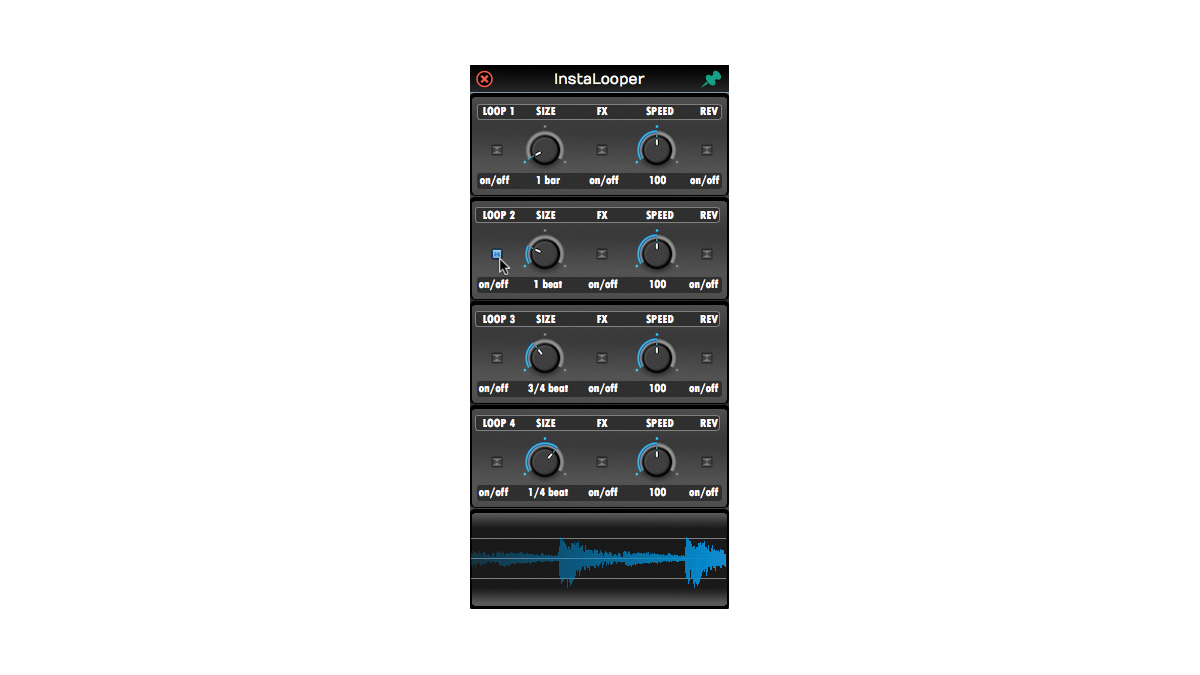
Audioblast InstaLooper
Audioblast’s InstaLooper isn’t your ordinary delay-based looper - it’s a wildly creative four-part looper with inspiring built-in effects.
There are four rows of controls, each of which corresponds to a different loop. These rows feature trigger buttons to loop the audio, and knobs to change the loop duration (playback is synced to your host). You can also add an effect, change the speed of the loop and reverse it.
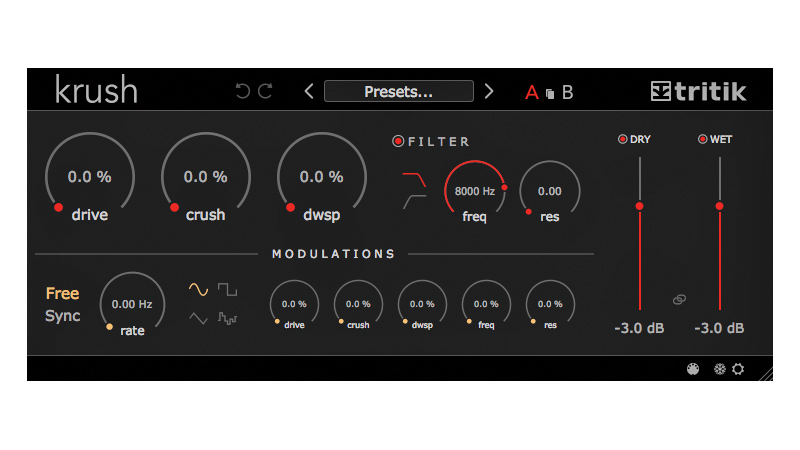
Tritik Krush
When a project is sounding a bit too clean, one of the quickest ways to roughen things up is to use a bit crusher, and Tritik is offering a free one in the form of Krush.
Featuring both bit-crushing and downsampling algorithms, this promises to combine "the crispy taste of the digital realm with the warmth of its drive stage and analogue-modelled resonant filters".
All parameters can be modulated, and Krush offers a lo-fi sound and squelchy filter.

Airwindows freebies
If any one developer could be said to exemplify the very spirit of freeware, it has to be Chris Johnson, the enterprising aural explorer (and seeming insomniac) behind Airwindows. He isn’t afraid to experiment, often setting out to solve a particular problem and ending up with something entirely different - but equally useful.
With over 50 plugins, trying them all out is an almost overwhelming prospect... and we should know - we’ve done it! Some of our favourites include Slew 2, a nifty tool to control high frequencies; TubeDesk and TransDesk, which impart subtle mixing console character; Distance, which does just what you’d think; Point, an “explosive” transient shaper; Pyewacket, an old-school compressor; and the rather aggressive Drive.

Inear Display Regressif
Described as a ‘digital chaos unit’, Regressif gives you various tools that can be used to degrade your audio, including a multimode filter with distortion, sample-rate reduction and bitcrushing effects. There are also two LFOs and an LFO mixer.
Everything is presented on a pretty clear and straightforward interface. It’s colour-coded and modulation is applied by dragging nodes. Presets are supplied, though you can also create your own or take a gamble with the randomisation option.

Voxengo Tempo Delay
This plugin is so much more than a standard delay. A true stereo delay with two fully-independent channels, Tempo Delay gives you plenty of options to create interesting rhythmic echoes that will stick stringently to the host’s BPM.
There’s a pair of multimode filters (with overdrive) that can be plumbed in before the echo effect, but the two Tremolos are a little more flexible in terms of routing. You could go the predictable route and stick them in before the delay line, but you can achieve some cool effects by sticking the tremolos in after those echoes.
Filters offer Frequency and Cutoff parameters, while Tremolos have Period and Depth knobs. The Delays provide control over Period, Feedback and Delay time, along with Gain.
There’s a lot of room for experimentation here; if you don’t have this one, you don’t have enough delays!
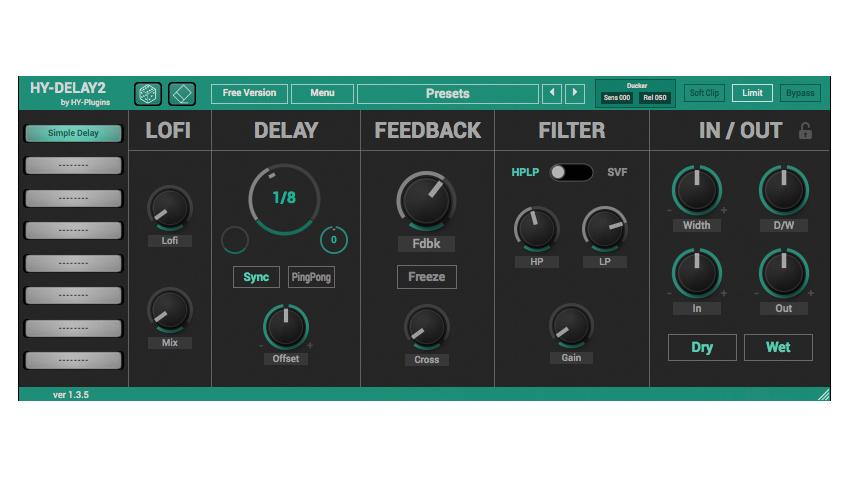
HY-Plugins HY-Delay2
Vintage tape and bucket-brigade delays remain popular - and costly - studio effects, but it’s quite easy to obtain a similar sound using a decently-outfitted delay plugin like this.
First, shut that tempo sync off and dial in your delay time using only your ears. Next, employ the in-built low- and high-pass filters to reduce the bandwidth of those echoes. HY-Delay2 makes it even easier with a Lofi section that can be used to impart some intentional imperfection to your signal.

Adam Szabo Phazor
Since it hit the shelves in 1997, the Access Virus has become an undisputed hardware classic. ‘Virus’ has since become a sort of brand name, coming attached to a series of hardware wondersynths, with new versions being released every few years, including a couple of software iterations.
Some of its popularity is due to the elegant way its built-in effects are handled and, indeed, the quality of those effects. Take, for example the Virus’s six-stage chorus, with its dramatic, swirling sound.
Adam Szabo has, with the help of one J. Bradford, distilled that famous sound into a simple, easy to use plugin. As with the original, this phaser is a stage-stage affair, with a handful of parameters to control ’em. You can choose the number of stages, adjust the Mix, Feedback, and Spread, and tweak the Rate and Depth of the LFO.

Oblivion Sound Lab OSL Chorus
Initially a way to fatten up patches, the chorus built into Roland’s Juno-60 became legendary in its own right.
OSL Chorus is a quick ticket to that gooey sound, and though the original in-built Roland jobs offered only a couple of on/off switches for control, OSL Chorus provides Rate, Depth, and Offset parameters, along with Filter and Wet ’n’ Dry amounts.

Balance Mastering Teufelsberg Reverb
A convolution-based reverb with a singular sonic signature, Teufelsberg Reverb is nothing if not original. Initially released as set of impulses captured inside the Teufelsberg surveillance tower, (a Cold War NSA installation), these impulses proved so popular that the developer used them as the basis for this, its first plugin.
There’s little in the way of control here – just Mix, Gain and six types of reverb, but that’s enough! It’s open-source and available for Windows, OS X and Linux.

Black Rooster Cypress TT-15
Black Rooster Audio’s Cypress TT-15 is aimed squarely at the axe grinders among you. Aping an unnamed low wattage amp head, it’s simple and powerful with plenty of grit. Selectable low and high outputs are joined by the obligatory Gain and Volume controls, with a Tone control thrown in for good measure.
Cypress TT-15 is capable of everything from subtly coloured clean tones to ballsy leads that can cut through a mix. You can slot it in before a speaker sim of your choice, or use the included 2 x 12 speaker cab sim that Black Rooster has so generously provided.
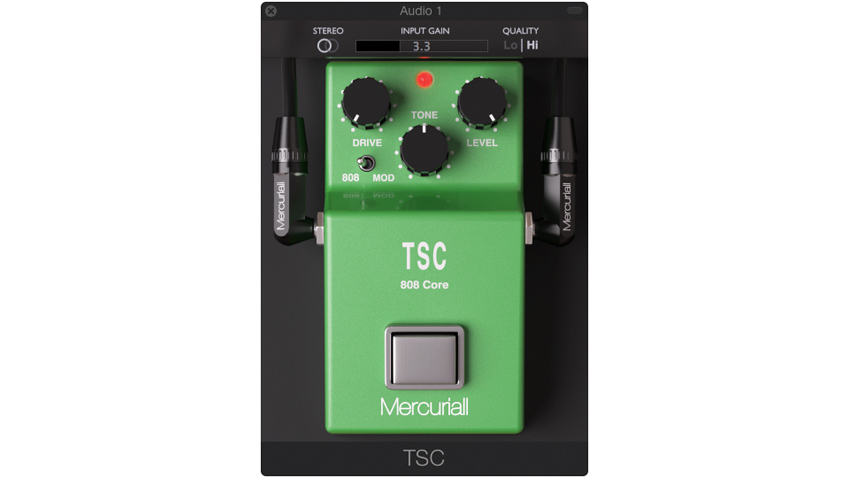
Mercuriall TSC 808 Core
The Ibanez Tube Screamer (unit name TS-808, but try not to get confused) may be the single most famous distortion stompbox ever made. In production since the late 1970s, this one has graced many a classic rock recording, and Mercuriall has now managed to capture the killer tone of the original and present it in the type of familiar neon green finery that leaves no doubt what you’re getting.
Tone and Drive knobs are present and correct, and you can switch in a cleaner sound if you’d prefer. But then you’d be certifiable, wouldn’t you? Switch between stereo and mono modes as you like.

Ursa DSP Lagrange
Lagrange is a delay with a difference, deriving its effect using granular synthesis techniques.
Granular synthesis has been used in a wide variety of applications, from timestretching algorithms in samplers to dense, complex reverbs. Pushed to extremes, it can be used to transform the most mundane sounds into very bizarre and atmospheric soundscapes.
As you’d imagine, applying such jiggery- pokery is an inspiring application. In Lagrange, each ‘grain’ is taken from a different point in the delay buffer, and the user is provided with lots of control over how those grains are replayed.
There are five algorithms from which to choose, all with looney names like Phasoid and Marching Rand. If you’ve used granular tools before, you’ll be familiar with parameters like Grain Rate and Density, along with parameters more common to delays - Feedback, Low Cut and High Cut... but the effects Lagrange can produce are anything but familiar!

Abletunes Knobs
These three plugins each lash a handful of parameters to a single, unified control. Operation may be simple, but what’s going on under the hood seems fairly complex to our ears. The idea behind the knobs is to encourage fast action rather than deep tweaking.
The Drive Knob does just as you’d expect, providing wideband stereo distortion that varies as you push it harder and harder. The Attack Knob, meanwhile, is a transient shaper that can add some serious bite to beats, or anything else for that matter. Finally, the Space Knob provides a medium-sized room reverb, the amount of which you can crank up to taste, for use as an insert or a send, for just the right amount of quick ambience. The three in combination represent great sound and ease-of-use.
Computer Music magazine is the world’s best selling publication dedicated solely to making great music with your Mac or PC computer. Each issue it brings its lucky readers the best in cutting-edge tutorials, need-to-know, expert software reviews and even all the tools you actually need to make great music today, courtesy of our legendary CM Plugin Suite.




